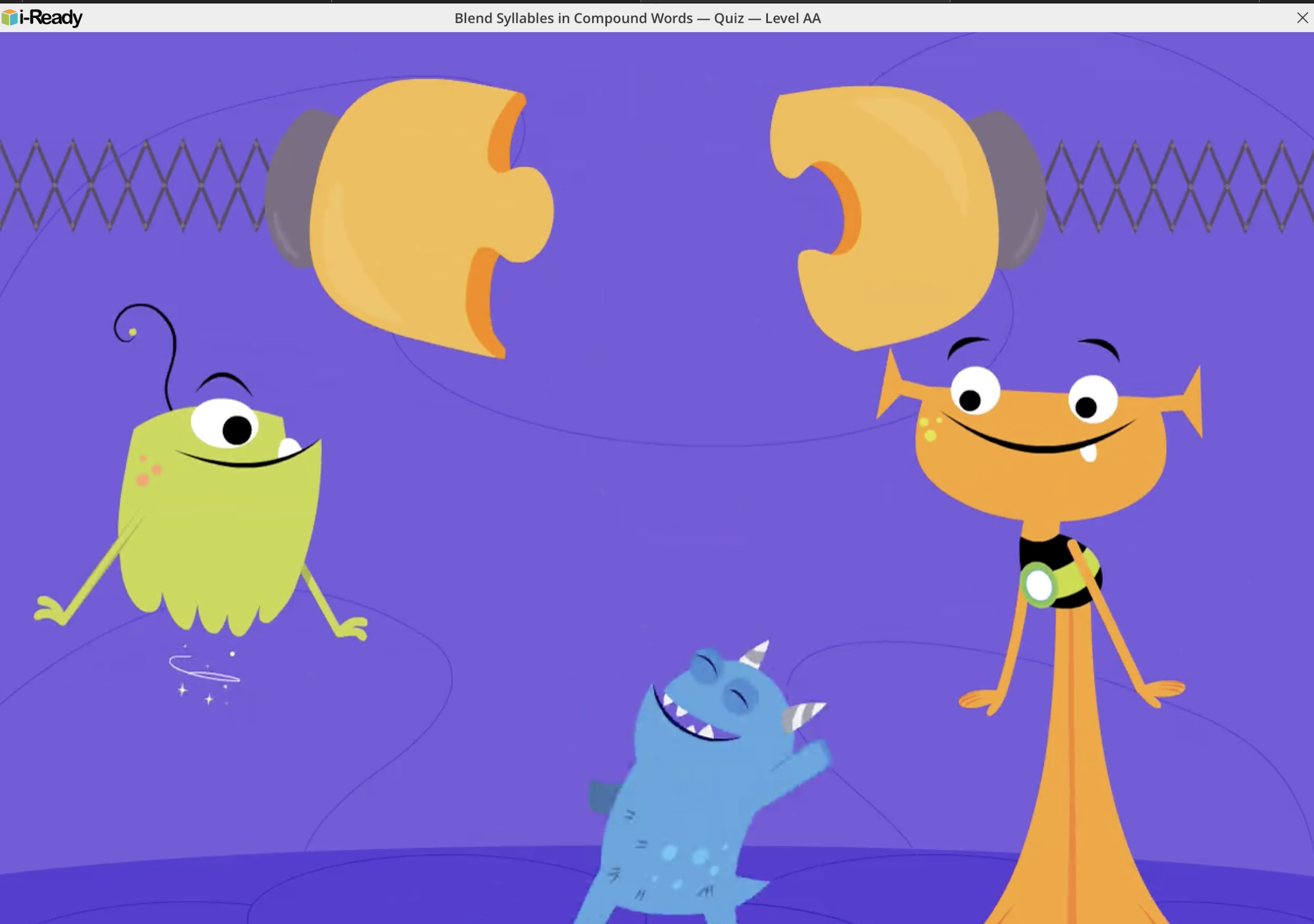Project: Emerging Kinder Lessons
Product Video Montage for Marketing
Game-ifying Letter Recognition
Academic Skill Focus: Recognizing Letters
User Level: pre-K
Problems to Solve: How do we create a repetitive activity that is satisfying and re-usable for two different purposes in the lesson — evaluation and practice?
Solution: Developed tactile and haptic activity with satisfying pay-offs. Visually re-skinned the activity but used same mechanics. “Bubble popping” is used for evaluation as a one-off interaction. “Tile breaking” is used for skill exposure and requires student to tap letter 6 times before payoff moment. After selecting the tile, the other slide off-screen and re-arrange. After each interaction the blurred image in the background becomes clearer indicating a “reveal moment” at the end. Each “hidden picture” moment was created to use alliteration in a playful way. T= Tacos Take the Train.
Hidden Picture development was a magical collaboration between the design and editorial team to come up with delightful sentences and illustrations.
Hidden Picture Examples:
L=Llamas Learn to Limbo, D=Dragons Dive for Donuts, C=Camel Cramped in a Cubby, O=Octopus On Ostrich
Visualizing Abstract Sounds in Concrete Way
Phonics Skill: Blending Compound or Two-Syllable Words
User Level: pre-K
Problem to Solve: How do we visually represent a word with two parts (without letter glyphs) in a concrete way that demonstrates the concept of connection for students?
Solution: Use real-world concrete metaphor of puzzle-piece shapes that show two parts meant to connect together.
Designed “capsule” form, similar to popular “surprise egg” activities popular with this age group, which provided a sense of surprise and delight as well as a logical container for the image of the word. The subtle bouncing, stretching, pulsing and breaking open effects of the capsule enticed the students to play with them.
Rhyming Sort with Drag & Drop
Phonics Skill: Recognizing Rhyme
User Level: pre-K
Problems to Solve: If sorting is the approach to evaluate the skill, how do we design a sorting activity taking into account limited motor-skills (i.e. inability to use drag-and-drop interaction with mouse)?
Solution: Implementing a done-button into the activity allows for students to “sort” through two tap-interactions. First tap opens the chest and repeats the stem word (for added exposure) and the second tap submits the answer. The visual assets and animation give the student the sense of sorting without a drag-and-drop mechanic.





